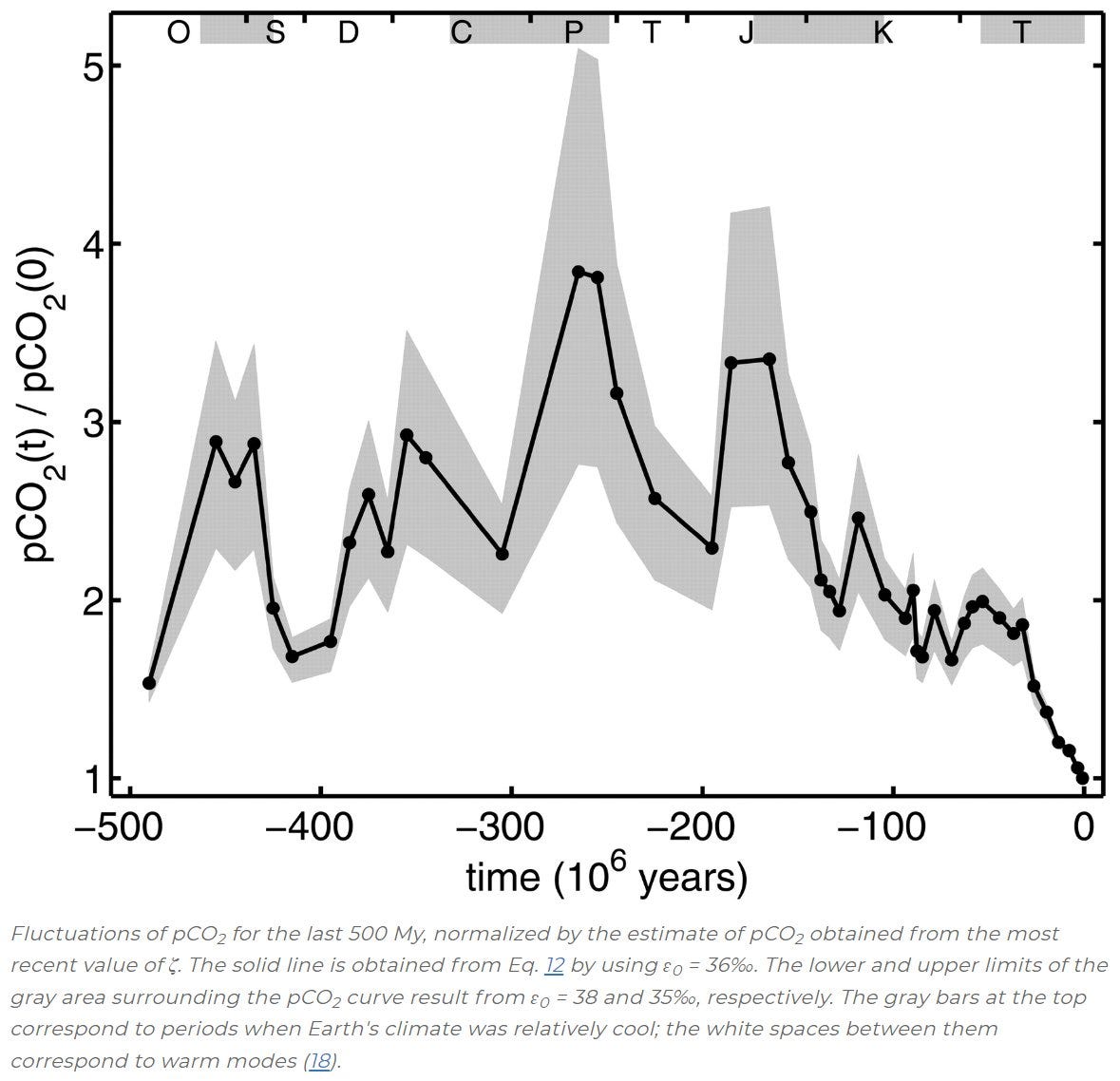The non-uniformity of climate change.
Nearly all of the worlds population lives between 60°N and 60°S latitude, which has been shown to have significantly less variation during large climatic shifts over the last 550 million years.
The climate of the last 550 million years…
Over the last 550 million years, the Earth's climate has undergone significant changes, including periods of relative stability and dramatic shifts. Here is a general overview of the climate changes during this vast timescale:
Paleozoic Era (550-252 million years ago):
Cambrian Period: The climate was generally warm and tropical, with no polar ice caps. Sea levels were high.
Ordovician Period: Cooling occurred, leading to the formation of glaciers and the onset of the Andean-Sahran ice age which occurred at elevated atmospheric CO2 concentration.
Silurian and Devonian Periods: The end of the Saharan-Andean glaciation occurs early in the Silurian when CO2 levels plummet. The climate becomes generally warm and stable, with the absence of polar ice caps and widespread coral reef formations.
Carboniferous Period: The climate was humid and warm, with large swamp forests which much of our current coal deposits are sourced from. Atmospheric CO2 was on average about 1000-1500 ppm, the optimal level for photosynthesis. Oxygen levels were high due to extensive plant growth. Near the end of the Carboniferous, the Permo-Carboniferous glaciation began, also at significantly higher atmospheric CO2 concentrations.
Permian Period: The climate was characterized by significant temperature fluctuations, ranging from warm to cool. The period ended with a major extinction event.
Mesozoic Era (252-66 million years ago):
Triassic Period: The climate was generally warm, with widespread deserts and higher carbon dioxide levels. The breakup of the supercontinent Pangaea led to changing climate patterns.
Jurassic Period: The climate became more humid, and global temperatures increased. Dinosaurs thrived, and large shallow seas covered some areas.
Cretaceous Period: The climate was generally warm, with high atmospheric carbon dioxide levels. Sea levels were high, and extensive marine ecosystems developed.
Cenozoic Era (66 million years ago-present):
Paleogene Period: The climate transitioned from warm to cooler conditions. The beginning saw a significant extinction event and the rise of mammals.
Neogene Period: The climate gradually cooled, leading to the development of ice sheets in Antarctica. The formation of the Isthmus of Panama influenced ocean currents and climate.
Quaternary Period: The most recent period, characterized by repeated glaciations and interglacial periods. The last major glaciation, known as the Last Glacial Maximum, occurred around 26,500 to 19,000 years ago.
In addition to these broad climatic trends, numerous smaller-scale climate variations occurred within each era and period. These fluctuations were driven primarily by various factors, including changes in solar radiation, continental positions, atmospheric composition, volcanic activity, and ocean currents.
A detailed understanding of past climates is derived from various sources, including geological records, ice cores, fossil evidence, and computer models. While scientists have made significant progress in reconstructing ancient climates, uncertainties and ongoing research persist in fully understanding the intricacies of past climate changes.
Climate change by latitude…
Keep reading with a 7-day free trial
Subscribe to Irrational Fear to keep reading this post and get 7 days of free access to the full post archives.





